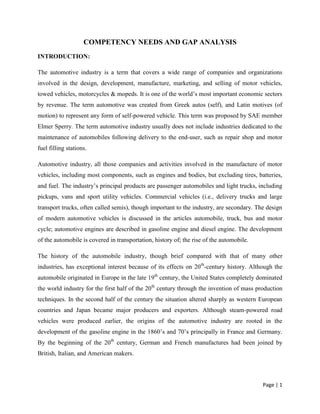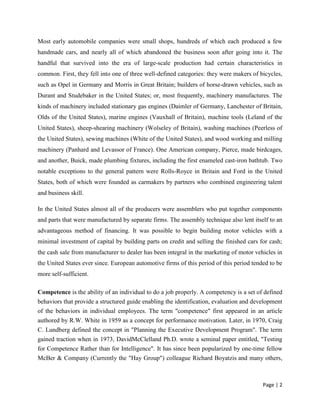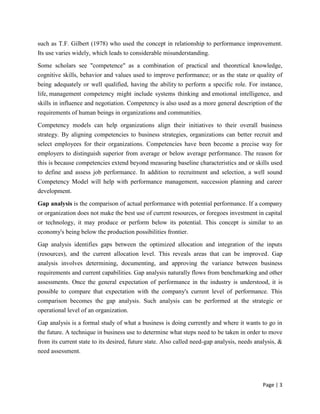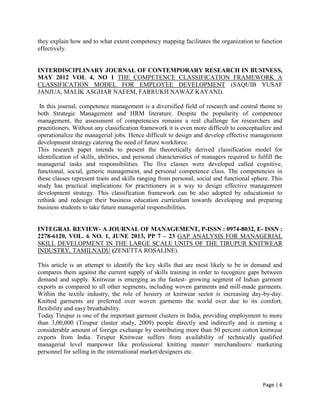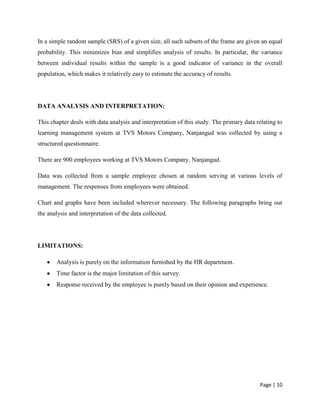The document discusses competency needs and gap analysis for the automotive industry. It provides background on the automotive industry and history. It then defines competencies, competency models, and gap analysis. Competencies are sets of defined behaviors that guide evaluation and development of employees. Competency models help align initiatives to business strategy for recruitment, selection, performance management, and succession planning. Gap analysis identifies the differences between current and potential performance to reveal improvement areas. The document discusses types of competencies like organizational, core, technical, behavioral, and management competencies. It concludes that competency models are most effective when linked to an organization's human resource system.
